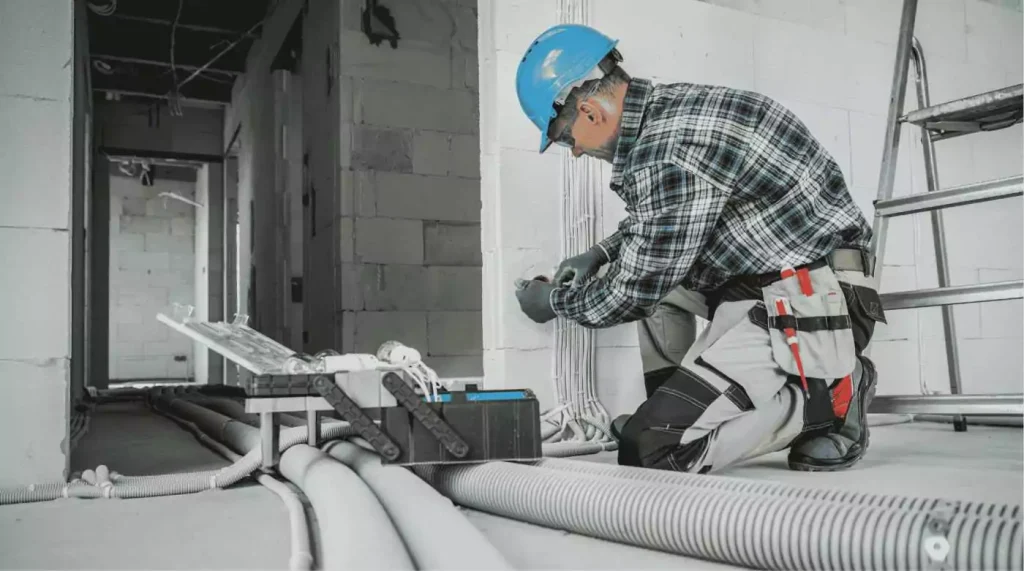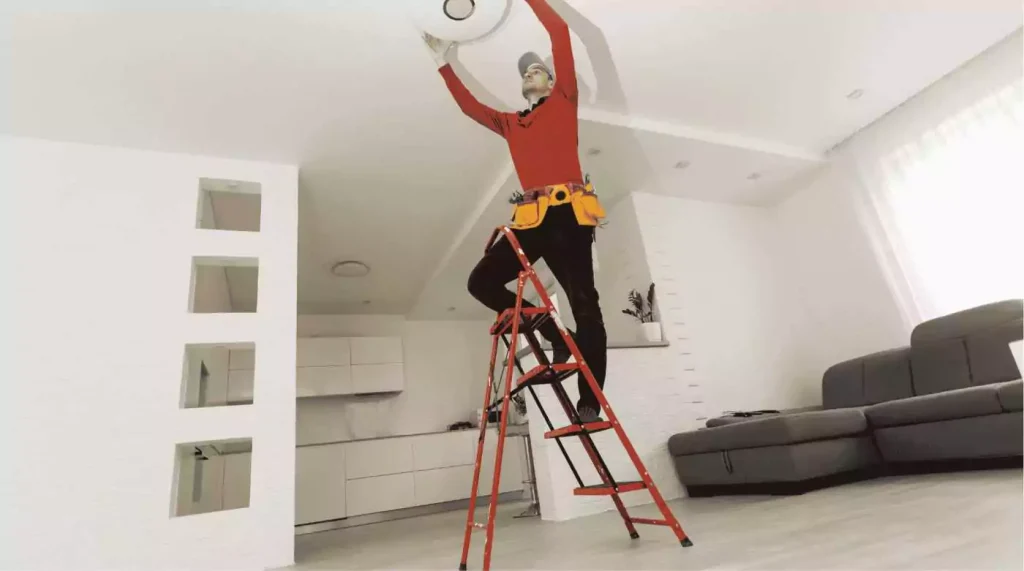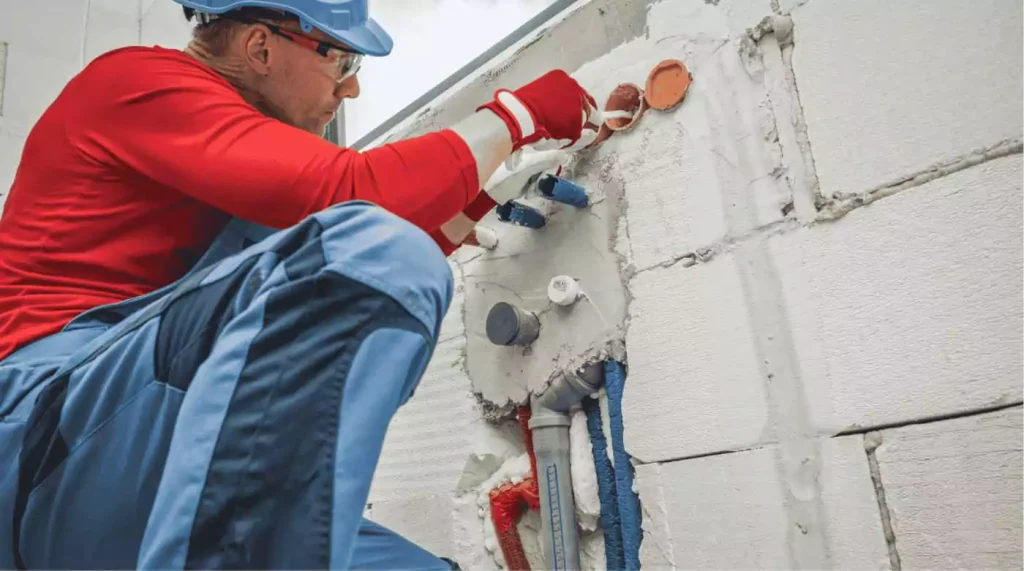Residential Electrical Installation in Your New Home: Step-by-Step Guide
What I’m about to embark upon by coaching you through it is a super interesting procedure that is residential electrical installation. What comes to my mind right now is the thrill and the anticipation one feels while building a new house. As I have been responsible for many electrical installations, I can assure you that this step is very important in the process of developing a safe, effective, and comfortable area. With this piece, I’m going to be with you in every phase of the electricity installation work, transferring my wisdom gained from experience to you.
1. Planning and Design: Laying the Foundation for Electrical Excellence
What is considered for an electrical installation to be successful is meticulous planning and design. We find that communicating is extremely important at this stage. Together with the main contractor, the architect, and the parents, we ensure that the system will meet the requirements and will be the most cost-effective solution for the whole house.
Load Calculation: Anticipating Your Electrical Needs
The first thing we do before anything else is, measure your consumption very thoroughly. This is accomplished by analyzing your present and prospective electrical needs. We take into account the usage of equally large but diverse appliances, such as air conditioners and refrigerators, as well as smaller gadgets such as mobile devices and computers. Such a comprehensive set of considerations will act as the basis for the robustness of your electrical system, and thus the utility of the latter without overloads.
Circuit Design: Efficiency Meets Safety
The stage comes for efficient path designing based on the file of the load calculations. Here we can demonstrate our expertise. We insert foundational security mechanisms such as Ground Fault Circuit Interrupter (GFCI) and Arc Fault Circuit Interrupter (AFCI) protection. These are quite significant in settings such as kitchens and bedrooms respectively, where electrical impulses can pose great dangers.
Material Selection: The Building Blocks of Your Electrical System
The right choice of materials, which sets the time limitation and performance of your electrical system is chosen by us. We select either copper or aluminum wires with the duty of deciding to consider conductivity, cost, and durability. Furthermore, we clearly demonstrate that choosing the right circuit breakers is equally important as they act as the primary safeguard in cases of electric overloading.
Safety Measures: Extra Precautions for High-Risk Areas
I believe I need to pay a lot of attention to places that are wet, such as bathrooms and kitchens. We include extra safety precautions in order to minimize the electric utility mishaps in these areas. This might involve the fitting of unique outlets and additional grounding protocols.
2. Rough-In Phase: Building the Framework of Your Electrical System
We are ready to move on with the rough-in phase after doing the planning. This is the time when the practical foundation of your system starts. to be constructed.
Conduit Installation: Pathways for Power
It is highly significant to place the conduits in exact positions. The conduits are the pathways that your electrical wire will run through. Through careful planning, we will ensure that all building codes are followed as well as your system will work to its optimum capacity.
Box Installation: Preparing for Outlets and Switches
We begin with these box installations. The locations of your switches and outlets are to be indicated within these boxes. We need to install the boxes in such a way that they enable user comfort and convenience. To do this, we have to consider the furniture position and the room layout in general.
Wire Pulling: Threading the Lifelines of Your Home
We start with installing conduits and boxes then move on with the wire pulling itself. We put in wires rapidly through the conduits. Each cable is clearly marked to avoid any mistakes that might occur in the later phases of the project. The precision of this process reduces the time involved and hence lessens the chance of errors during the subsequent processes.
3. Inspection: Ensuring Compliance and Safety
We get our chance to do a re-inspection before proceeding further. The inspection is generally done by a licensed professional who is certified to enforce all relevant codes and regulations. I cannot emphasize this stage enough. It guarantees a strong base for the following steps and is certainly the best way to catch any issues early in the process.
4. Device Installation: Bringing Your Home to Life
After having finished the plans, we install and set up the devices and fixtures, which together with the provided energy will ensure the proper operation and will bring life to your house.
Outlets and Switches: The Interface of Your Electrical System
This stage brings your electrical system more comfortably closer to its final form. We shorten the wires with efficiency in mind and cast connections to the power outlets and switches. Proper connections are necessary to avoid the failures of the devices and also to make sure that electric work serves you for a long time.
Lighting Fixtures: Illuminating Your Space
Additionally, we install ceiling and also wall-mounted fixtures. Every fixture is mounted judiciously and checked for optimal functioning before the final acceptance. This process is where the home seems to come alive.
Circuit Breakers: The Heart of Your Electrical System
The service panel is equipped with the appropriate circuit breakers. These parts are crucial to making sure the distribution of power through your house is done safely. We do our homework at this front that is by selecting only those circuit breakers that match the load requirements of the individual circuits
5. Main Panel Connection: Powering Your Home
This is a brute activation step that happens with the electrical system which will operate your utilities and the utility provider’s grilling grid.
Service Entry Setup: The Gateway for Power
We join forces with the utility companies so that a safe and efficient grid entry point for your electrical service can be established. This involvement includes aspects like how close to the utility pole the building is situated if the Electrical installations are maintained-compatible, and how the installations will affect the house design from the outside.
Meter Installation: Measuring Your Power Consumption
The meter is firmly secured and is in perfect alignment with the utilities’ standards. It is responsible for measuring your home’s power consumption. Therefore, it is very important to ensure the correct placement which, in the same turn, has to be exact if you want accurate billings.
Main Breaker Connection: The Master Switch
Apart from the main breaker which is the control pad of your entire electrical system, we establish and a strong grounding system. This is a very vital factor of protection against electrical surges and potential fires which will help your home.
6. Testing and Verification: Ensuring Perfection
Once everything is in sight, we test everything out including how well your electrical system works in practice.
Continuity Check: Ensuring Uninterrupted Power Flow
We can test each wire to ensure an ongoing flow of electricity. Because continuity checks can also help us to identify wire breaks and weak connections.
Polarity Check: Verifying Correct Connections
Proper wiring orientation is paramount in order for electric appliances to operate safely. We make sure all the outlets and switches are connected correctly so as to avoid potential hazards.
Voltage Testing: Confirming Proper Power Levels
We take voltage measurements at various points in the system to see if they are within the desired range of voltages. This way we are sure each of your devices and home appliances will be supplied at its best.
Grounding Test: Safeguarding Against Shocks and Surges
The grounding system is thoroughly inspected. This is very important since it is the only way to prevent electrical shocks and power surges.
7. Final Inspection: Gaining Approval
The electrician cannot formally turn on your electrical system before it passes the final inspection. A certified technician reviews the entire electrical installation to ensure that the local codes and regulations have been followed. Should any changes be necessary they will be done first, and it ensures the system will operate and be safe.
8. Commissioning: Energizing Your Home
With the approval having arrived, we will wake up your new electrical system now.
Powering Up: The Moment of Truth
Through hitting the main switch the whole house is supplied with electricity for the very first time
Device Testing: Ensuring Everything Works
At the end of the day, we guarantee all the devices in your house are fully tested. The tests range from the largest electrical equipment to the smallest lights and are all taken seriously.
9. Documentation and Handover: Empowering Homeowners
We make you fully aware of how your system operates and how you should maintain it, hence the documents we offer. These documents come in the form of graphical schematics, load calculations, a user-friendly homeowner’s guide, etc. Furthermore, we include maintenance tips and suggestions for home upgrades in the documentation to ensure that your system remains in pristine condition for years to come.
Conclusion: Powering Your Home, Powering Your Life
As we wrap up our discussion, I hope you have gained a better understanding of the residential electrical installation services process. From the implementation point of view, the continuous process, though it may seem complicated, is indeed final as it is fundamentally necessary for the creation of a safe, efficient, and suitable home environment. Whether you’re constructing a new house or making improvements to an existing one, the proper installation and a well-designed electrical system are the essential components of modern living in the home environment.
Don’t forget to mention that electrical work is not a chore that anyone can do. For the reliability and safety of an electrical system in the best possible way, it is always better to consult professional electricians, with enough expertise and quality work, you will be able to enjoy your home’s electrical infrastructure for very many years.
Contents
- 1 Residential Electrical Installation in Your New Home: Step-by-Step Guide
- 1.1 1. Planning and Design: Laying the Foundation for Electrical Excellence
- 1.1.1 2. Rough-In Phase: Building the Framework of Your Electrical System
- 1.1.2 3. Inspection: Ensuring Compliance and Safety
- 1.1.3 4. Device Installation: Bringing Your Home to Life
- 1.1.4 5. Main Panel Connection: Powering Your Home
- 1.1.5 6. Testing and Verification: Ensuring Perfection
- 1.1.6 7. Final Inspection: Gaining Approval
- 1.1.7 8. Commissioning: Energizing Your Home
- 1.1.8 9. Documentation and Handover: Empowering Homeowners
- 1.2 Conclusion: Powering Your Home, Powering Your Life
- 1.1 1. Planning and Design: Laying the Foundation for Electrical Excellence




